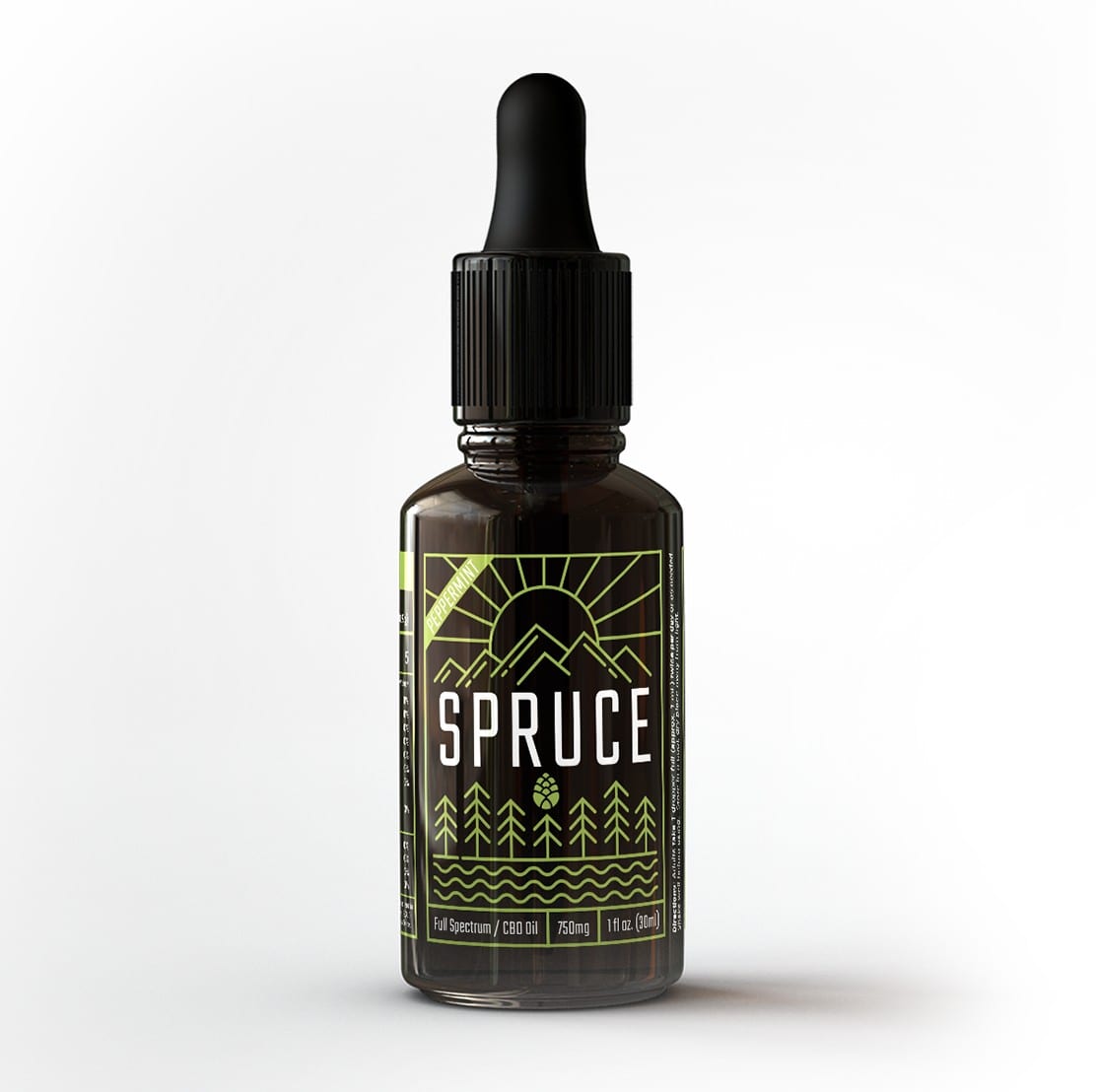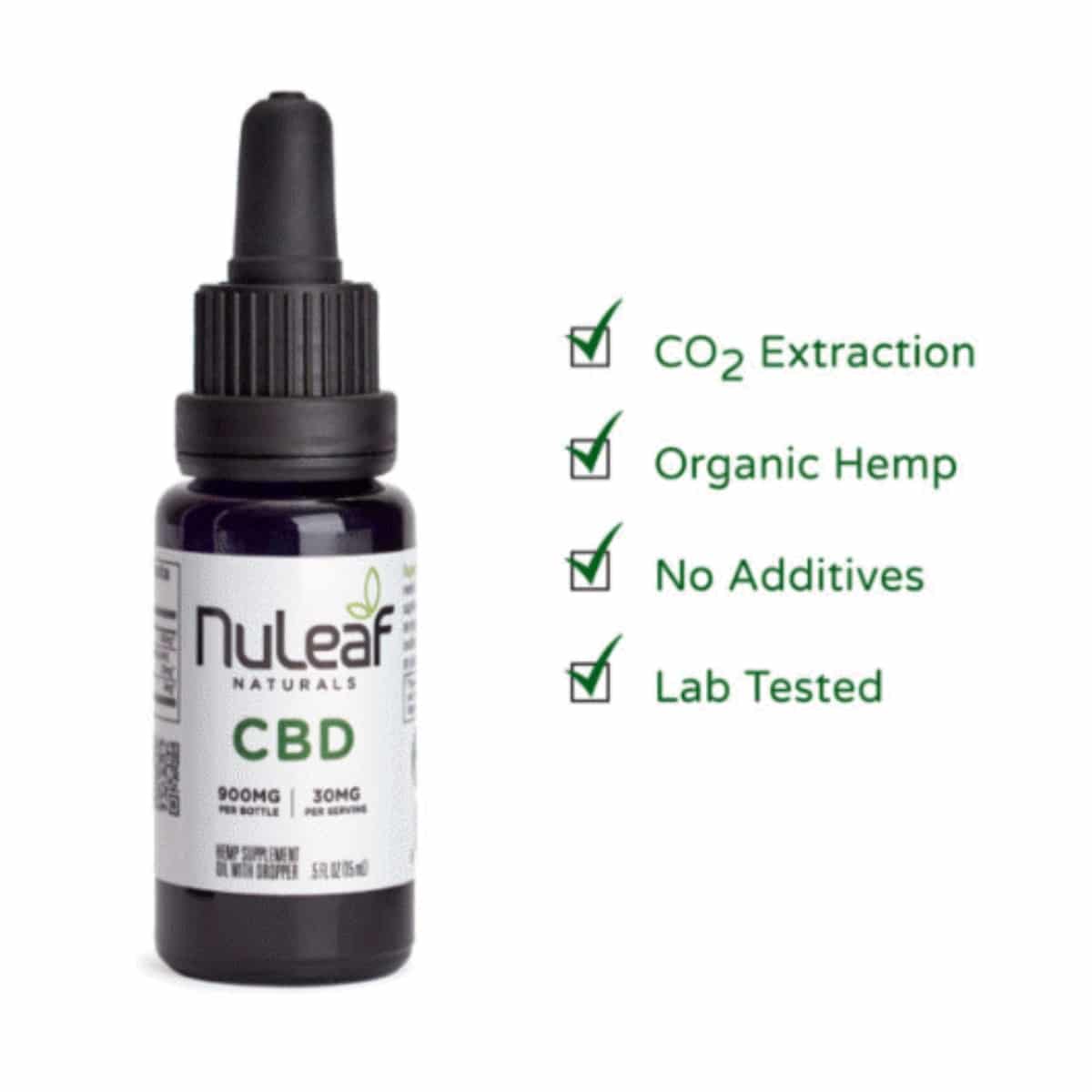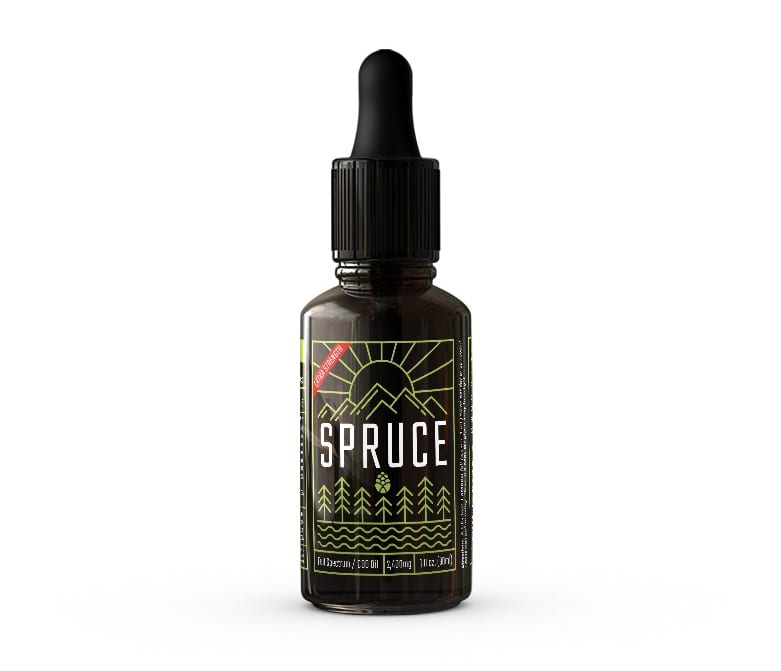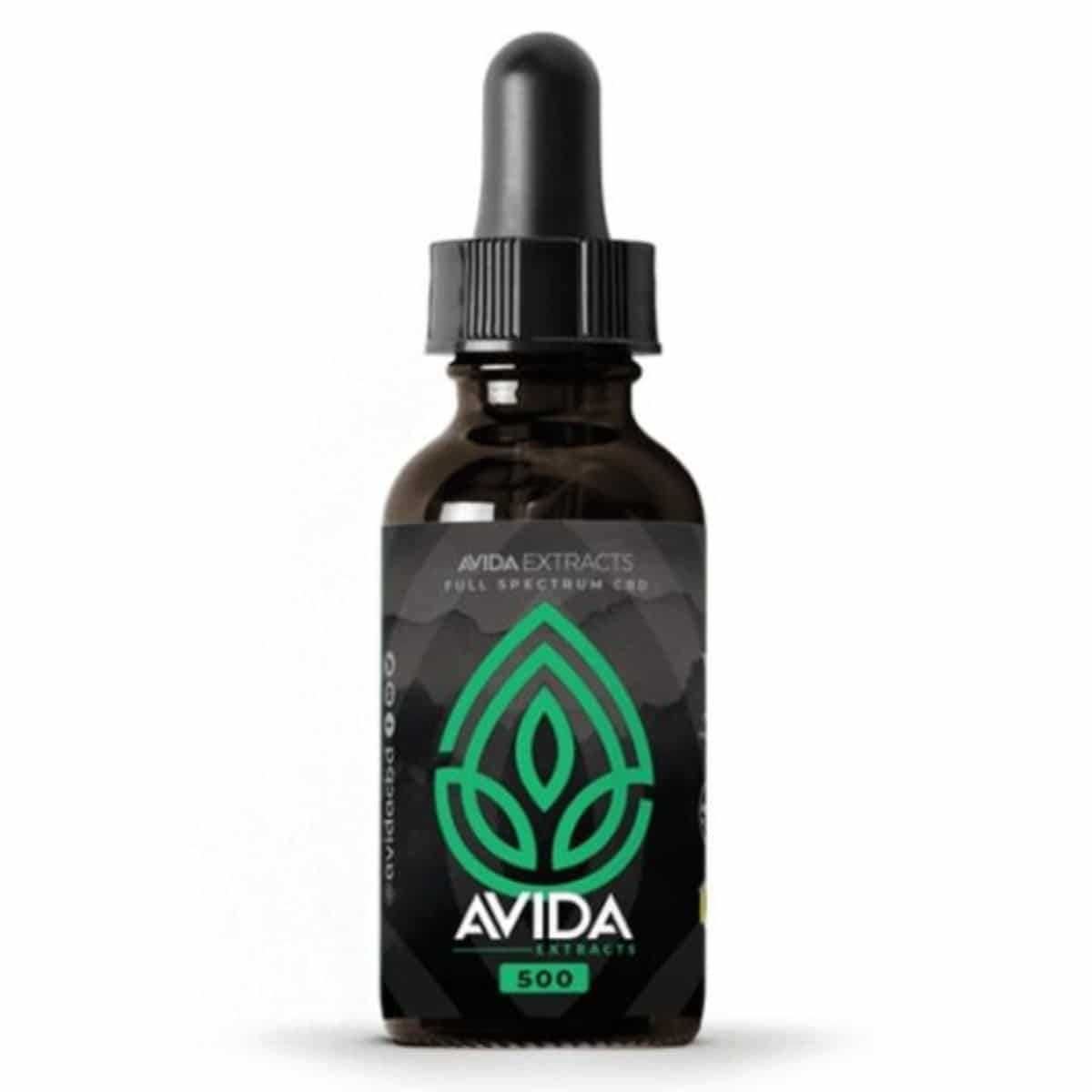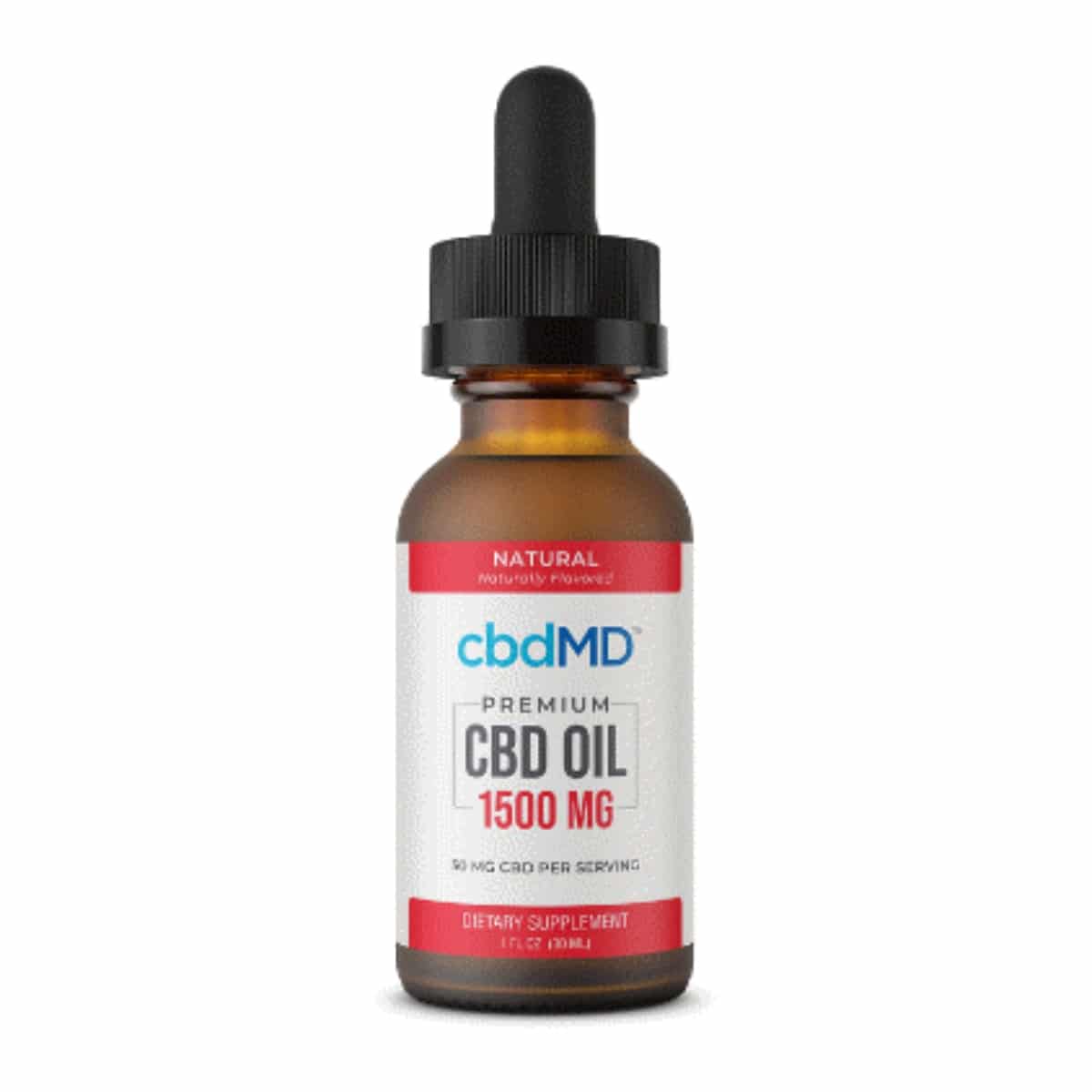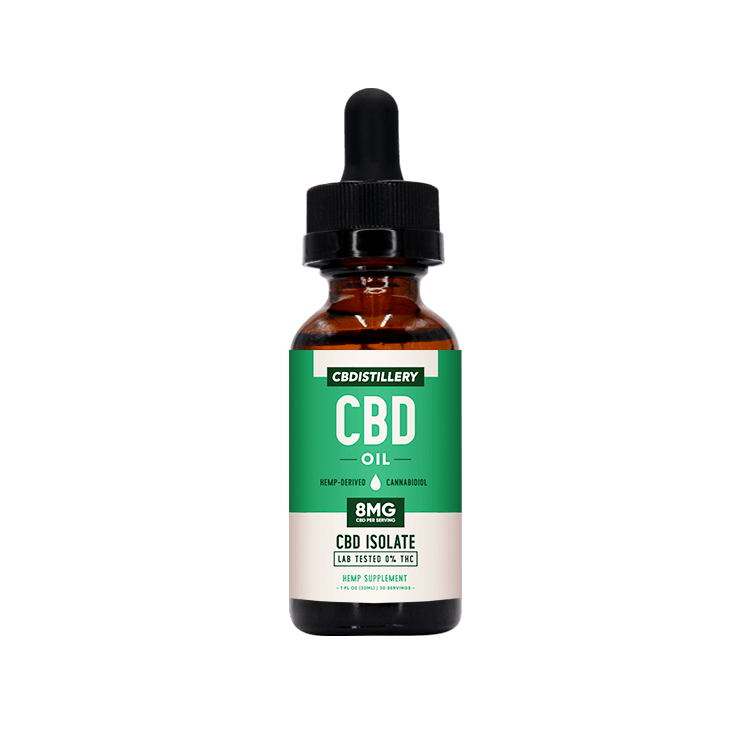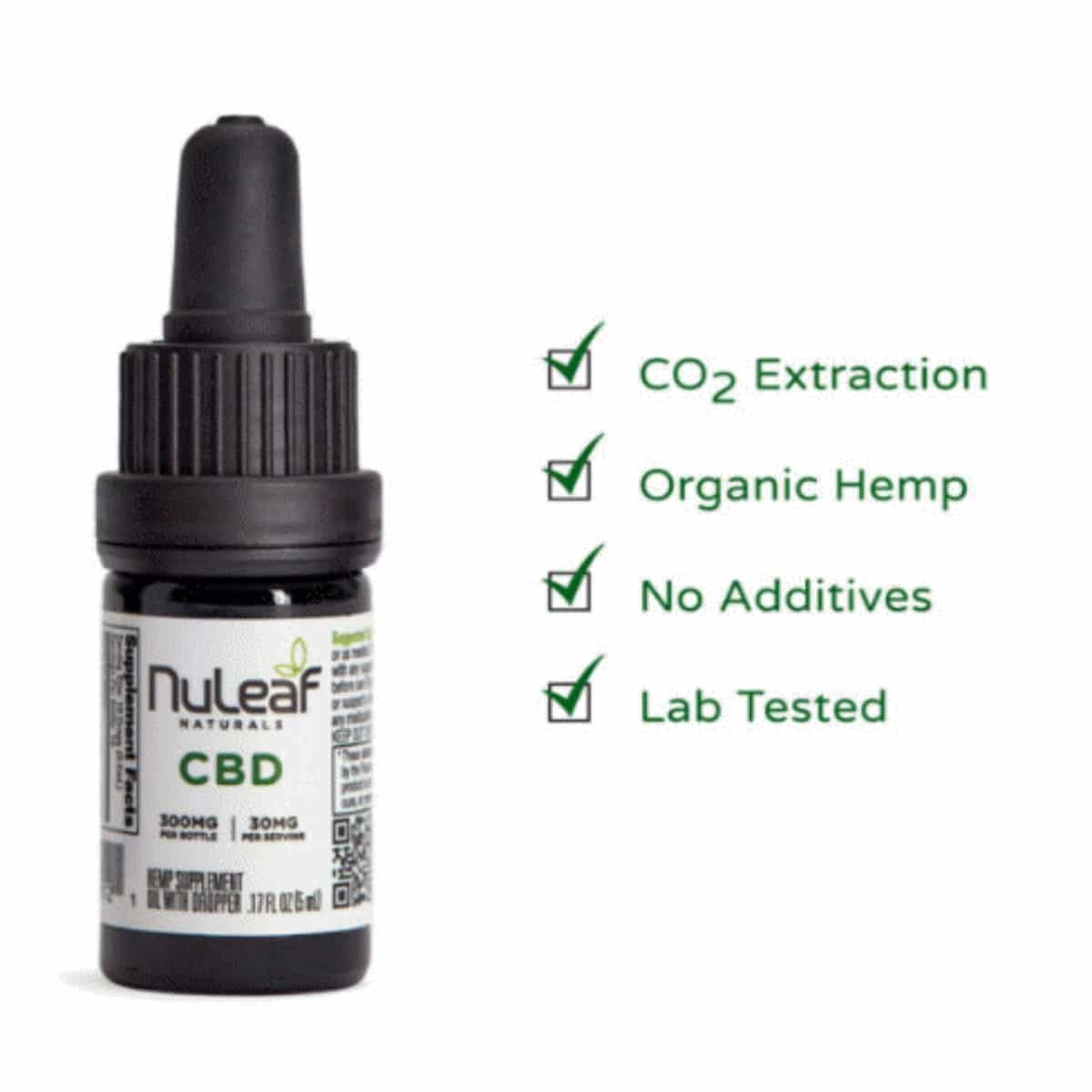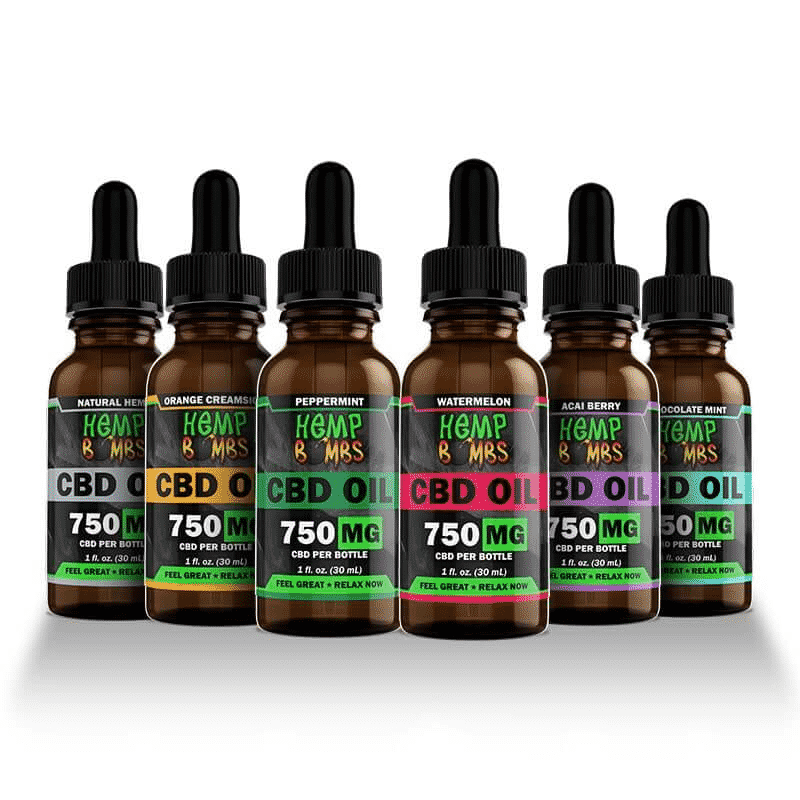Best CBD Oil for Sciatica
Searching for the best CBD product for sciatica? Check out CBD Clinicals’ list of credible CBD products for sciatica, and see which ones match your needs and preferences.
Best CBD Oil for Sciatica 2025
- Spruce 750mg Lab Grade CBD Oil Editor's Pick
- NuLeaf Naturals 900mg Full Spectrum Hemp CBD Oil Best Organic
- Spruce 2400mg Lab Grade CBD Oil Editor's Pick
- Avida Full Spectrum CBD Oil Tincture 500mg Best Seller
- cbdMD CBD Oil Tincture Natural 1500mg Best Natural Alternative
- CBDistillery THC Free CBD Oil Tinctures Best THC-Free
- cbdMD CBD Oil Tincture Natural 750mg Best Customer Rated
- NuLeaf Naturals 300mg Full Spectrum Hemp CBD Oil Best Starter
- Hemp Bombs 750mg CBD Oil Best Flavor Range
Compare the Best CBD Oil for Sciatica in 2022
Best CBD Oil for Sciatica
1. Spruce 750mg Lab Grade CBD Oil
cbdc overall score
4.8
CBDC Evaluation Table/Score
| Pros | Cons |
|---|---|
|
Mid-strength |
No other flavors |
|
Natural peppermint flavor |
|
|
Made from 100% organic and natural ingredients |
Overview
Each bottle of the 750mg CBD oil tincture contains 25mg of CBD per dropper full. The oil is peppermint flavor to mask any unpleasant tastes related to CBD.
2. NuLeaf Naturals 900mg Full Spectrum Hemp CBD Oil
cbdc overall score
5.0
CBDC Evaluation Table/Score
| Pros | Cons |
|---|---|
|
Pure CBD hemp |
No other flavors |
|
All natural |
|
|
Approximately 300 drops total |
Overview
Natural remedy for various illnesses. NuLeaf Naturals’ CBD oil is a whole-plant extract containing a full spectrum of naturally occurring synergistic cannabinoids and terpenes.
3. Spruce 2400mg Lab Grade CBD Oil
cbdc overall score
5.0
CBDC Evaluation Table/Score
| Pros | Cons |
|---|---|
|
Extra Strength |
Tastes bitter |
|
No artificial flavoring or colors |
No THC-free option |
|
Made from 100% organic and natural ingredients |
Overview
The largest bottle of CBD oil that Spruce offers contains 2,400mg of CBD. This is full-spectrum CBD oil, which is the maximum possible potency. Each high potency dropper full contains 80mg of CBD. There are no flavorings in it, which allows for the most CBD to fit in the 30ml bottle.
4. Avida Full Spectrum CBD Oil Tincture 500mg
cbdc overall score
4.6
CBDC Evaluation Table/Score
| Pros | Cons |
|---|---|
|
Light Spearmint flavor |
No other flavor |
|
Non-THC, Non-detected in drug test |
Overview
Avida Extracts Full Spectrum CBD oil is the latest iteration of the brand’s advanced Avida CORE Spectrum technology. They use a proprietary full spectrum blend, resulting in the highest naturally occurring Phyto-cannabinoids and Terpenes with THC (<0.3) to support your health.
5. cbdMD CBD Oil Tincture Natural 1500mg
cbdc overall score
4.7
CBDC Evaluation Table/Score
| Pros | Cons |
|---|---|
|
Various delicious flavors to choose from |
cbdMD uses MCT as its carrier oil so individuals who are allergic with coconuts should consider other brand options |
|
Has vegan, organic, and gluten-free ingredients |
|
|
Free shipping for this particular product within USA |
|
|
World-class customer service team |
Overview
cbdMD’s CBD oil tinctures are made using only CBD sourced from medical hemp and MCT oil as a carrier oil. Tinctures are offered in orange, mint, natural, and berry flavors. Safe for daily use, the oil tinctures are packaged with a built-in rubber dropper to adjust CBD dosage easily. The packaging is made to be easy to transport and discreet to use.
6. CBDistillery THC Free CBD Oil Tinctures
cbdc overall score
4.4
CBDC Evaluation Table/Score
| Pros | Cons |
|---|---|
|
60-Day Satisfaction Guarantee |
Dropper is a bit shaky |
|
Various strengths |
|
|
Oil extracted from aerial plant parts of US grown industrial hemp |
|
|
Sourced from non-GMO industrial hemp grown in the USA through natural farming practices |
Overview
CBDistillery’s Isolate CBD Oil Tinctures harness the power of pure CBD. CBD Isolate Oil Tinctures include 0.0% THC. When you use CBDistillery CBD Isolate Oil Tinctures, you can be assured you’re using the highest quality CBD on the market.
7. NuLeaf Naturals 300mg Full Spectrum Hemp CBD Oil
cbdc overall score
4.6
CBDC Evaluation Table/Score
| Pros | Cons |
|---|---|
|
Pure CBD hemp |
No other flavors |
|
All natural |
A bit pricey compared to competitors |
|
Approximately 100 drops total |
Overview
This is one of several concentrations from NuLeaf Naturals. As the lowest concentration, it is the company’s best option for those new to CBD oil. The product is lab-tested and fully organic. It is full-spectrum, so it contains THC in small quantities.
8. cbdMD CBD Oil Tincture Natural 750mg
cbdc overall score
4.4
CBDC Evaluation Table/Score
| Pros | Cons |
|---|---|
|
Vegan and Gluten free |
Does not ship internationally |
|
Has a third-party lab test |
|
|
Wide variety of CBD strengths and sizes |
Overview
A 750mg bottle of cbdMD’s Broad Spectrum Oil Tincture does not contain THC. It also has a fairly wide flavor range which is perfect for those who prefer other taste. Vegan consumers are considered since cbdMD offers Vegan products. Aside from all of that, another reason why people love cbdMD is because it’s free from harmful chemicals.
9. Hemp Bombs 750mg CBD Oil
cbdc overall score
3.9
CBDC Evaluation Table/Score
| Pros | Cons |
|---|---|
|
Wide variety of flavors |
Incomplete information about the product |
|
Lab test results are complete |
Does not ship to all international countries |
|
30-day money-back guarantee |
Overview
Hemp Bombs offer CBD Oil Tinctures that come in a 30ml bottle containing 750mg of CBD. They provide a wide range of flavors perfect for those that have a knack for sweets. Consumers can safely intake this because it’s free of chemicals and pesticides. Hemp Bombs also offer a 20% off on products upon subscription.
Benefits of CBD for Sciatica
According to Mayo Clinic, sciatica refers to pain radiating from the sciatic nerve, originating from the lower back and traveling through the hips, buttocks, and legs(1). Usually, the pain affects one side of the body only.
Moreover, sciatica often occurs when a herniated disc, bone spur on the spine, or spinal stenosis (narrowing of the spine) compresses the nerve. This condition results in pain, inflammation, and numbness in the affected leg.
People with sciatica may experience several degrees of pain, from mild discomfort to a burning sensation or excruciating pain, like a jolt or electric shock. Even coughing or sneezing can worsen the pain. Sitting for long periods can also aggravate sciatica.
Cannabidiol (CBD), a phytocannabinoid or naturally occurring compound in cannabis plants, is known for its potential pain-relieving and anti-inflammatory effects(2).
According to a 2004 study, sciatic pain is a mix of neuropathic and other kinds of pain(3). Neuropathic pain occurs from injuries or diseases of the somatosensory system(4).
This system is part of the sensory nervous system that allows for the perception of touch, pain, pressure, and movement from the joints, muscles, skin, and connective tissues.
A 2012 animal study from The Journal of Experimental Medicine investigated glycine receptors’ role in treating chronic pain(5). These receptors are involved in motor control and pain perception(6).
Results showed that CBD may suppress chronic inflammatory and neuropathic pain(7).
Moreover, a 2018 review from Frontiers in Pharmacology examined CBD’s effectiveness in relieving chronic pain(8). The review analyzed studies conducted from 1975 to 2018.
It examined different types of pain, including chronic back pain, cancer pain, neuropathic pain, and fibromyalgia. The review noted CBD’s potential pain-relieving effects.
Furthermore, a study investigated the effects of Sativex, a combination of CBD and tetrahydrocannabinol (THC), in pain management(9). Results indicated that the drug may relieve chronic neuropathic pain, pain caused by nerve damage, peripheral neuropathic pain, advanced cancer pain, rheumatoid arthritis, and multiple sclerosis.
Another animal study showed that transdermal CBD application may reduce inflammation and pain-related behaviors without evident side effects in rat subjects with arthritis(10).
Inflammation is the immune system’s response to harmful irritants, including germs, foreign objects, or splinters in your fingers(11).
Different immune system cells may be involved when inflammation occurs in your body. They release various substances that widen the affected tissue’s small blood vessels, allowing more blood to reach the injured tissue.
As a result, inflamed areas become red, swollen, and painful.
While most studies are conducted on animals and not specific to sciatica, future research may uncover similar benefits for sciatica in human subjects.
A 2018 study from the Journal of Pharmacology and Experimental Therapeutics also highlighted that CBD may have potential anti-inflammatory properties(12).
Another 2012 review published in Free Radical Biology & Medicine examined CBD’s potential benefits in various diseases, like rheumatoid arthritis, diabetes, hypertension, metabolic syndrome, ischemia-reperfusion injury, depression, and neuropathic pain(13).
The researchers indicated that CBD, which may interact with the endocannabinoid system, is a promising prototype for anti-inflammatory drug development.
A 2020 review published in Antioxidants also indicated CBD’s potential anti-inflammatory properties(14). According to the review, CBD demonstrated potential anti-inflammatory properties by acting through the PPARγ receptor.
PPARγ receptor is a subtype of peroxisome proliferator-activated receptors, which play a significant role in energy homeostasis and metabolic function(15).
How CBD Helps With Sciatica
How CBB interacts with the endocannabinoid system (ECS) may explain CBD’s potential benefits for sciatica. The ECS helps maintain homeostasis or balance in different biological functions, such as mood, pain perception, and immune response(16).
Furthermore, the ECS consists of two main types of cannabinoid receptors: CB1 receptors and CB2 receptors. Both receptors interact with cannabinoids or natural compounds in the body.
CB1 receptors exist on the brain and central nervous system, lungs, liver, and kidney(17). They regulate bodily functions, such as memory processing, pain sensation, appetite, mood, and sleep.
Meanwhile, CB2 receptors are abundant in cells within the immune system and its associated structures(18). Once activated, these receptors stimulate a response that fights inflammation.
These anti-inflammatory effects may help treat inflammation-related conditions, such as arthritis, Crohn’s disease, and inflammatory bowel syndrome(19).
According to a 2006 study, CBD may decrease inflammation by enhancing adenosine receptor A2A, helping suppress immune cells(20).
Moreover, according to a review, the body’s glutamatergic system influences the effectiveness of some analgesic drugs used for neuropathic pain(21).
The glutamatergic system manages the discharge of glutamate, a major neurotransmitter released by the brain’s nerve cells(22). Glutamate is also essential in various physiological functions.
Glutamate dysfunction has adverse effects on diseases and injuries, including the development of seizures and brain damage after a stroke(23).
Cannabinoids, like CBD, may inhibit the release of glutamate(24). Thus, CBD may help manage neuropathic pain, a type of pain present in sciatica.
Studies also showed that CBD may impact the TRPV-1 and GPR55 receptors(25–26). Both of these receptors exist in the skin and are essential in pain signaling and inflammation.
Thus, while CBD cannot cure sciatica, its potential pain-relieving and anti-inflammatory properties may help people with sciatica.
How Soon Can CBD’s Effects Be Felt?
CBD’s potential therapeutic benefits in sciatica may kick in faster or last longer based on different factors, such as the CBD administration method, your body weight, metabolism, and the CBD potency.
CBD oil tinctures are absorbed directly into the bloodstream(27). You may feel the effects within 15 to 45 minutes.
Meanwhile, topical CBD products may take an hour or two to kick in. CBD is absorbed through the surface of the skin to interact with localized cannabinoid receptors.
Thus, you may apply CBD topicals liberally to overcome the skins’ low cannabinoid absorption rate.
CBD topicals’ potential benefits in sciatica may last for six hours. Others may last for a few days.
CBD edibles may produce delayed effects as CBD needs to pass through the digestive system. These CBD products may kick in within 30 to 60 minutes(28).
While CBD tinctures may provide immediate relief, effects may last for four to six hours only.
Meanwhile, CBD edibles’ effects may last for over six hours.
Your metabolism, the frequency of use, dosage, and product quality affect how long CBD may help with sciatica.
Possible Side Effects of Using CBD for Sciatica
Although CBD may have potential therapeutic benefits in sciatica, the compound may also induce some side effects. These include(29):
- Dry mouth
- Drowsiness
- Diarrhea
- Tiredness
- Fatigue
- Changes in weight
- Reduced appetite
Furthermore, CBD may interact with other medications, like blood thinners.
A 2011 review also noted other side effects of CBD, including the inhibition of hepatic drug metabolism and decreased fertilization capacity(30).
Consult a healthcare professional knowledgeable about CBD use to avoid possible adverse effects.
How to Choose the Best CBD for Sciatica
Various forms of CBD for sciatica are available on the market, including CBD tinctures, CBD topicals, CBD edibles, CBD capsules, and even CBD vapes. However, to pick the best CBD oil products for sciatica, you should adhere to the following:
- Consult healthcare professionals, especially when buying CBD oil products for the first time, when considering CBD treatment for severe conditions, or when taking other medications.
- Verify whether the CBD product uses non-GMO, organic hemp. Credible CBD brands grow hemp plants from their farm or buy from licensed hemp growers in Colorado and other states.
- Select quality products that use CO2 extraction methods to maximize the benefits of hemp extracts.
- Confirm whether the product undergoes third-party lab testing. The certificate of analysis (COA) should be accessible via the brand’s website. It must show the product’s actual CBD content and the absence of pesticides, heavy metals, residual solvents, and other harmful contaminants.
- Compare product label claims with the COA. Third-party lab results of high-quality products show accurate or higher CBD content than their product label claims, showing credibility and providing great value for money.
- Choose CBD brands with memberships to hemp organizations, certifications, or accreditations from the Better Business Bureau (BBB). These are credible CBD brands as they show transparency, strict compliance with legal and BBB standards, excellent customer service, and ethical business practices.
- Research on state laws regarding cannabis use to buy CBD products for sciatica legally.
- Know the difference between full-spectrum CBD, broad-spectrum CBD, and CBD isolates before using CBD oil products.
Full-spectrum hemp extracts have a complete range of phytocannabinoids or naturally occurring compounds in cannabis plants, including CBD, THC, terpenes, flavonoids, fatty acids, essential oils, and other minerals.
Terpenes provide the cannabis plants’ unique aroma, while flavonoids are responsible for their vivid colors.
These compounds produce the entourage effect, suggesting that they have more benefits when combined than when used as isolated elements(31). Thus, you can use full-spectrum CBD oil if you want to maximize all the compounds’ benefits.
Meanwhile, broad-spectrum CBD is like full-spectrum CBD without the psychoactive compound THC. Thus, you can use these products if you want to avoid the euphoric effects of THC and still maximize the other compounds’ benefits.
CBD isolates are pure CBD extracted separately from all other compounds. These CBD products let you maximize the benefits of CBD.
CBD Dosage for Sciatica
Generally, CBD is well tolerated in humans, with a dosage of up to 1,500 mg per day(32).
However, Epidiolex is the only FDA-approved CBD product with a recommended starting dosage of 2.5 mg of cannabidiol for every kilogram of body weight that can be taken twice daily(33). Given this limitation, there is no official recommended CBD dosage for sciatica.
Determining the right CBD dosage may be challenging, as effects can vary based on several factors. These elements include your body weight, metabolism, the CBD potency, and product quality.
Thus, you may start taking the product in small doses, around 5 mg of CBD. You can gradually increase the dosage once you experience pain relief from sciatica.
It is vital to consult a medical expert, especially one knowledgeable on CBD use, to help you determine the CBD dosage that suits your needs best.
How to Take CBD Oil for Sciatica
With CBD’s increasing popularity, various CBD companies produce different forms of CBD. The most common CBD oil products for sciatica include CBD tinctures, CBD topicals, CBD capsules, and CBD edibles.
CBD Tinctures
You can apply CBD tinctures sublingually or directly under the tongue to allow faster absorption of CBD into the bloodstream.
You can also let CBD drops stay under your tongue for 60 to 120 seconds before swallowing(34). The substance may take effect within 15 to 45 minutes.
Results depend on various factors, like the CBD administration method, your body weight, metabolism, and the CBD potency.
One downside of CBD tinctures is their unpleasant, earthy taste. However, several CBD companies offer CBD tinctures in different flavors.
You can also conveniently add CBD tinctures to your coffee, smoothie, or food.
CBD Topicals
You can apply topical CBD products for sciatica, like CBD creams, CBD lotions, CBD balms, and CBD salves.
As CBD topicals are absorbed into the skin’s surface, you may apply a more significant amount of CBD to your skin. However, start with small doses to monitor how your skin reacts to CBD.
Once you see positive changes after several days of use, you can gradually increase the dosage.
Effects of topical CBD products may kick in after an hour or two. These effects may last for six hours or even several days, depending on the CBD administration method, your body weight, metabolism, the CBD potency, and product quality.
CBD Capsules
You can also easily take CBD oil for sciatica through CBD capsules. However, they may take longer to work than oral CBD drops as CBD capsules need to pass through the digestive tract.
Furthermore, dosing is tricky because of the delayed onset of effect (around one to two hours), unknown effects of stomach acids, and recent meals(35).
Thus, CBD capsules may not be suitable for those seeking immediate pain relief from sciatica.
CBD Edibles
If you do not want the earthy, grassy taste of pure CBD hemp extract, you can take CBD edibles for sciatica, like CBD gummies.
However, unlike CBD oral products, CBD edibles can take a while to kick in as they need to pass through the digestive system.
A 2016 study noted that CBD edibles’ effects may kick in within 30 to 60 minutes(36). For CBD edibles that contain THC, peak blood levels occur approximately three hours later, and the effects can last over six hours.
Legality of CBD
Cannabis laws continue to evolve, especially in the United States. Following the legalization of industrial hemp, the 2018 Farm Bill also states that hemp-derived CBD products with 0.3% or less THC are no longer controlled substances at the federal level(37).
Tetrahydrocannabinol (THC) is a psychoactive cannabinoid or compound in cannabis plants that causes a euphoric high among users. Although hemp-derived CBD products are no longer part of the Controlled Substances Act (CSA), marijuana remains a Schedule 1 controlled drug(38).
Schedule 1 drugs are not allowed for medical use and have a high potential for abuse(39).
According to the Food and Drug Administration (FDA), marijuana has a high risk of abuse, which may be attributed to THC’s psychoactive effects(40). The agency also regulates products with cannabis or cannabis-derived compounds.
According to the FDA, products with CBD or THC cannot be sold legally as dietary supplements(41). Currently, the agency approves one cannabidiol product only: Epidiolex(42).
Other FDA-approved synthetic cannabis-related drug products include Marinol (dronabinol), Syndros (dronabinol), and Cesamet (nabilone) only(43).
Epidiolex is a purified form of CBD derived from cannabis. The drug is used to treat seizures associated with Lennox-Gastaut syndrome and Dravet syndrome, two severe cases of epilepsy in children.
Marinol and Syndros have been approved to help with anorexia associated with weight loss in patients who have acquired immunodeficiency syndrome (AIDS).
Meanwhile, Cesamet is used to reduce nausea and vomiting caused by cancer chemotherapy.
As the FDA has approved these cannabis products only, consumers should research state laws and buy CBD in areas that legally allow recreational use or medical use of marijuana.
Product Frequently
Asked Questions
-
How can CBD help with sciatica?
CBD may help with sciatica through its interaction with the endocannabinoid system that maintains balance in different biological processes, like pain perception and immune response(44).
-
Is there evidence that CBD helps with sciatica?
Current findings indicated that CBD may provide pain-relieving and anti-inflammatory effects(45). Thus, CBD may reduce pain and inflammation caused by sciatica.
-
Is there any evidence that CBD can make sciatica worse?
Although research on CBD’s effectiveness in sciatica remains inconclusive, no studies suggest that CBD may worsen sciatica. Recent findings showed that CBD may reduce pain and inflammation, which are sciatica symptoms(46).
-
Will CBD interact with medications I may be taking for sciatica?
CBD may interact with other drugs and alter how the body breaks down these medications(47). Thus, you should seek medical advice to ensure proper CBD use and dosage.
-
Are there other treatments I should consider alongside CBD to help with sciatica?
Other sciatica treatments include over-the-counter medications, non-steroidal anti-inflammatory drugs (NSAIDs), and painkillers, like Ibuprofen. However, NSAIDs can only relieve nociceptive pain (physical pain)(48).
Meanwhile, CBD hemp oil may have antidepressant and anticonvulsant properties, supporting how CBD may be an alternative treatment for sciatic nerve pain(49–50).
-
Can I fail a drug test if I use CBD for sciatica?
Cannabidiol is a non-psychoactive compound that does not give users a euphoric feeling(51). However, frequent usage of other CBD products containing small amounts of the psychoactive compound THC can result in a false-positive result.
-
What is the dosage for sciatica?
Currently, there are no official guidelines for CBD dosage. However, the general rule is to start taking CBD at lower doses and gradually increase the dosage once positive effects are observed.
-
Can CBD oil replace prescription meds to treat sciatica?
While research shows that CBD may relieve sciatica pain, it is best to seek medical advice before using CBD products to avoid possible adverse effects.
-
What is the best CBD oil for sciatica?
The best CBD oil products for sciatica usually come from organic, GMO-free hemp. These products adopt CO2 extraction methods, contain accurate or higher cannabidiol content, and are manufactured by brands that have hemp organization memberships, accreditations, and certifications.
- Mayo Clinic. Sciatica. Retrieved from https://www.mayoclinic.org/diseases-conditions/sciatica/symptoms-causes/syc-20377435#:~:text=Sciatica%20refers%20to%20pain%20that,one%20side%20of%20your%20body
- Russo E. B. (2008). Cannabinoids in the management of difficult to treat pain. Therapeutics and clinical risk management, 4(1), 245–259. doi.org/10.2147/tcrm.s1928. https://www.ncbi.nlm.nih.gov/pmc/articles/PMC2503660/#b26
- Baron, R., & Binder, A. (2004). Wie neuropathisch ist die Lumboischialgie? Das Mixed-pain-Konzept [How neuropathic is sciatica? The mixed pain concept]. Der Orthopade, 33(5), 568–575. doi.org/10.1007/s00132-004-0645-0. https://pubmed.ncbi.nlm.nih.gov/15067505/
- Colloca, L., Ludman, T., Bouhassira, D., Baron, R., Dickenson, A. H., Yarnitsky, D., Freeman, R., Truini, A., Attal, N., Finnerup, N. B., Eccleston, C., Kalso, E., Bennett, D. L., Dworkin, R. H., & Raja, S. N. (2017). Neuropathic pain. Nature reviews. Disease primers, 3, 17002. doi.org/10.1038/nrdp.2017.2. https://www.ncbi.nlm.nih.gov/pmc/articles/PMC5371025/
- Xiong, W., Cui, T., Cheng, K., Yang, F., Chen, S. R., Willenbring, D., Guan, Y., Pan, H. L., Ren, K., Xu, Y., & Zhang, L. (2012). Cannabinoids suppress inflammatory and neuropathic pain by targeting α3 glycine receptors. The Journal of experimental medicine, 209(6), 1121–1134. doi.org/10.1084/jem.20120242. https://www.ncbi.nlm.nih.gov/pmc/articles/PMC3371734/
- Avila, A., Nguyen, L., & Rigo, J. M. (2013). Glycine receptors and brain development. Frontiers in cellular neuroscience, 7, 184. doi.org/10.3389/fncel.2013.00184. https://www.ncbi.nlm.nih.gov/pmc/articles/PMC3800850/
- Xiong, W. (2012). Op Cit.
- Vučković, S., Srebro, D., Vujović, K. S., Vučetić, Č., & Prostran, M. (2018). Cannabinoids and Pain: New Insights From Old Molecules. Frontiers in pharmacology, 9, 1259. doi.org/10.3389/fphar.2018.01259. https://www.ncbi.nlm.nih.gov/pmc/articles/PMC6277878/
- Perez J. (2006). Combined cannabinoid therapy via an oromucosal spray. Drugs of today (Barcelona, Spain: 1998), 42(8), 495–503. doi.org/10.1358/dot.2006.42.8.1021517. https://pubmed.ncbi.nlm.nih.gov/16969427/
- Hammell, D. C., Zhang, L. P., Ma, F., Abshire, S. M., McIlwrath, S. L., Stinchcomb, A. L., & Westlund, K. N. (2016). Transdermal cannabidiol reduces inflammation and pain-related behaviours in a rat model of arthritis. European journal of pain (London, England), 20(6), 936–948. doi.org/10.1002/ejp.818. https://www.ncbi.nlm.nih.gov/pmc/articles/PMC4851925/
- InformedHealth.org [Internet]. Cologne, Germany: Institute for Quality and Efficiency in Health Care (IQWiG); 2006-. What is inflammation? 2010 Nov 23 [Updated 2018 Feb 22]. Available from: https://www.ncbi.nlm.nih.gov/books/NBK279298/
- Petrosino, S., Verde, R., Vaia, M., Allarà, M., Iuvone, T., & Di Marzo, V. (2018). Anti-inflammatory Properties of Cannabidiol, a Nonpsychotropic Cannabinoid, in Experimental Allergic Contact Dermatitis. The Journal of pharmacology and experimental therapeutics, 365(3), 652–663. doi.org/10.1124/jpet.117.244368. https://pubmed.ncbi.nlm.nih.gov/29632236/
- Booz G. W. (2011). Cannabidiol as an emergent therapeutic strategy for lessening the impact of inflammation on oxidative stress. Free radical biology & medicine, 51(5), 1054–1061. doi.org/10.1016/j.freeradbiomed.2011.01.007. https://www.ncbi.nlm.nih.gov/pmc/articles/PMC3085542/
- Atalay, S., Jarocka-Karpowicz, I., & Skrzydlewska, E. (2019). Antioxidative and Anti-Inflammatory Properties of Cannabidiol. Antioxidants (Basel, Switzerland), 9(1), 21. doi.org/10.3390/antiox9010021. https://www.ncbi.nlm.nih.gov/pmc/articles/PMC7023045/
- Tyagi, S., Gupta, P., Saini, A. S., Kaushal, C., & Sharma, S. (2011). The peroxisome proliferator-activated receptor: A family of nuclear receptors role in various diseases. Journal of advanced pharmaceutical technology & research, 2(4), 236–240. doi.org/10.4103/2231-4040.90879. https://www.ncbi.nlm.nih.gov/pmc/articles/PMC3255347/
- Education Collaboration Hope. (2017, Apr. 18). A Look at the Endocannabinoid System’s CB1 and CB2 Receptors. Retrieved from https://echoconnection.org/look-endocannabinoid-systems-cb1-cb2-receptors/
- Ibid.
- Ibid.
- Ibid.
- Carrier, E. J., Auchampach, J. A., & Hillard, C. J. (2006). Inhibition of an equilibrative nucleoside transporter by cannabidiol: a mechanism of cannabinoid immunosuppression. Proceedings of the National Academy of Sciences of the United States of America, 103(20), 7895–7900. doi.org/10.1073/pnas.0511232103. https://www.ncbi.nlm.nih.gov/pmc/articles/PMC1472541/
- Osikowicz, M., Mika, J., & Przewlocka, B. (2013). The glutamatergic system as a target for neuropathic pain relief. Experimental physiology, 98(2), 372–384. doi.org/10.1113/expphysiol.2012.069922. https://pubmed.ncbi.nlm.nih.gov/23002244/
- Nicolodi, M., Volpe, A. R., & Sicuteri, F. (1998). Fibromyalgia and headache. Failure of serotonergic analgesia and N-methyl-D-aspartate-mediated neuronal plasticity: their common clues. Cephalalgia: an international journal of headache, 18 Suppl 21, 41–44. doi.org/10.1177/0333102498018s2111. https://pubmed.ncbi.nlm.nih.gov/9533670/
- Institute of Medicine (US) Forum on Neuroscience and Nervous System Disorders. Glutamate-Related Biomarkers in Drug Development for Disorders of the Nervous System: Workshop Summary. Washington (DC): National Academies Press (US); 2011. 2, Overview of the Glutamatergic System. Available from: https://www.ncbi.nlm.nih.gov/books/NBK62187/
- Nicolodi, M. (1998). Op Cit.
- Sharir, H., & Abood, M. E. (2010). Pharmacological characterization of GPR55, a putative cannabinoid receptor. Pharmacology & therapeutics, 126(3), 301–313. doi.org/10.1016/j.pharmthera.2010.02.004. https://www.ncbi.nlm.nih.gov/pmc/articles/PMC2874616/
- Costa, B., Giagnoni, G., Franke, C., Trovato, A. E., & Colleoni, M. (2004). Vanilloid TRPV1 receptor mediates the antihyperalgesic effect of the nonpsychoactive cannabinoid, cannabidiol, in a rat model of acute inflammation. British journal of pharmacology, 143(2), 247–250. doi.org/10.1038/sj.bjp.0705920. https://www.ncbi.nlm.nih.gov/pmc/articles/PMC1575333/
- Arthritis Foundation. CBD for Arthritis Pain: What You Should Know. Retrieved from https://www.arthritis.org/health-wellness/healthy-living/managing-pain/pain-relief-solutions/cbd-for-arthritis-pain
- Borodovsky, J. T., Crosier, B. S., Lee, D. C., Sargent, J. D., & Budney, A. J. (2016). Smoking, vaping, eating: Is legalization impacting the way people use cannabis? The International journal on drug policy, 36, 141–147. doi.org/10.1016/j.drugpo.2016.02.022. https://www.ncbi.nlm.nih.gov/pmc/articles/PMC5010515/
- Bauer, B. A. (2018, Dec. 20). What are the benefits of CBD — and is it safe to use? Retrieved from https://www.mayoclinic.org/healthy-lifestyle/consumer-health/expert-answers/is-cbd-safe-and-effective/faq-20446700
- Bergamaschi, M. M., Queiroz, R. H., Zuardi, A. W., & Crippa, J. A. (2011). Safety and side effects of cannabidiol, a Cannabis sativa constituent. Current drug safety, 6(4), 237–249. doi.org/10.2174/157488611798280924. https://pubmed.ncbi.nlm.nih.gov/22129319/
- Russo E. B. (2019). The Case for the Entourage Effect and Conventional Breeding of Clinical Cannabis: No “Strain,” No Gain. Frontiers in plant science, 9, 1969. doi.org/10.3389/fpls.2018.01969. https://www.ncbi.nlm.nih.gov/pmc/articles/PMC6334252/
- Bergamaschi, M. M. (2011). Op Cit.
- U.S. Food and Drug Administration. Epidiolex (cannabidiol) oral solution. Retrieved from https://www.accessdata.fda.gov/drugsatfda_docs/label/2018/210365lbl.pdf
- Arthritis Foundation. Op Cit.
- Ibid.
- Borodovsky, J. T. (2016). Op Cit.
- U.S. Food and Drug Administration. (2020, Oct. 1). FDA Regulation of Cannabis and Cannabis-Derived Products, Including Cannabidiol (CBD). Retrieved from https://www.fda.gov/news-events/public-health-focus/fda-regulation-cannabis-and-cannabis-derived-products-including-cannabidiol-cbd
- Ibid.
- Drug Enforcement Administration. Drug Scheduling. Retrieved from https://www.dea.gov/drug-scheduling#:~:text=for%20the%20schedule
- U.S. Food and Drug Administration. (2020, Oct. 1). FDA Regulation of Cannabis and Cannabis-Derived Products, Including Cannabidiol (CBD).
- Ibid.
- U.S Food and Drug Administration. (2020, Oct. 1). FDA and Cannabis: Research and Drug Approval Process. Retrieved from https://www.fda.gov/news-events/public-health-focus/fda-and-cannabis-research-and-drug-approval-process
- Ibid.
- Education Collaboration Hope. (2017, Apr. 18). Op Cit.
- Russo E. B. (2008). Cannabinoids in the management of difficult to treat pain. Op Cit.
- Ibid.
- Iffland, K., & Grotenhermen, F. (2017). An Update on Safety and Side Effects of Cannabidiol: A Review of Clinical Data and Relevant Animal Studies. Cannabis and cannabinoid research, 2(1), 139–154. doi.org/10.1089/can.2016.0034. https://www.ncbi.nlm.nih.gov/pmc/articles/PMC5569602/
- Baron, R. (2004). Op Cit.
- de Mello Schier, A. R., de Oliveira Ribeiro, N. P., Coutinho, D. S., Machado, S., Arias-Carrión, O., Crippa, J. A., Zuardi, A. W., Nardi, A. E., & Silva, A. C. (2014). Antidepressant-like and anxiolytic-like effects of cannabidiol: a chemical compound of Cannabis sativa. CNS & neurological disorders drug targets, 13(6), 953–960. doi.org/10.2174/1871527313666140612114838. https://pubmed.ncbi.nlm.nih.gov/24923339/
- Silvestro, S., Mammana, S., Cavalli, E., Bramanti, P., & Mazzon, E. (2019). Use of Cannabidiol in the Treatment of Epilepsy: Efficacy and Security in Clinical Trials. Molecules (Basel, Switzerland), 24(8), 1459. doi.org/10.3390/molecules24081459. https://www.ncbi.nlm.nih.gov/pmc/articles/PMC6514832/
- National Center for Biotechnology Information (2020). PubChem Compound Summary for CID 644019, Cannabidiol. Retrieved from https://pubchem.ncbi.nlm.nih.gov/compound/Cannabidiol

